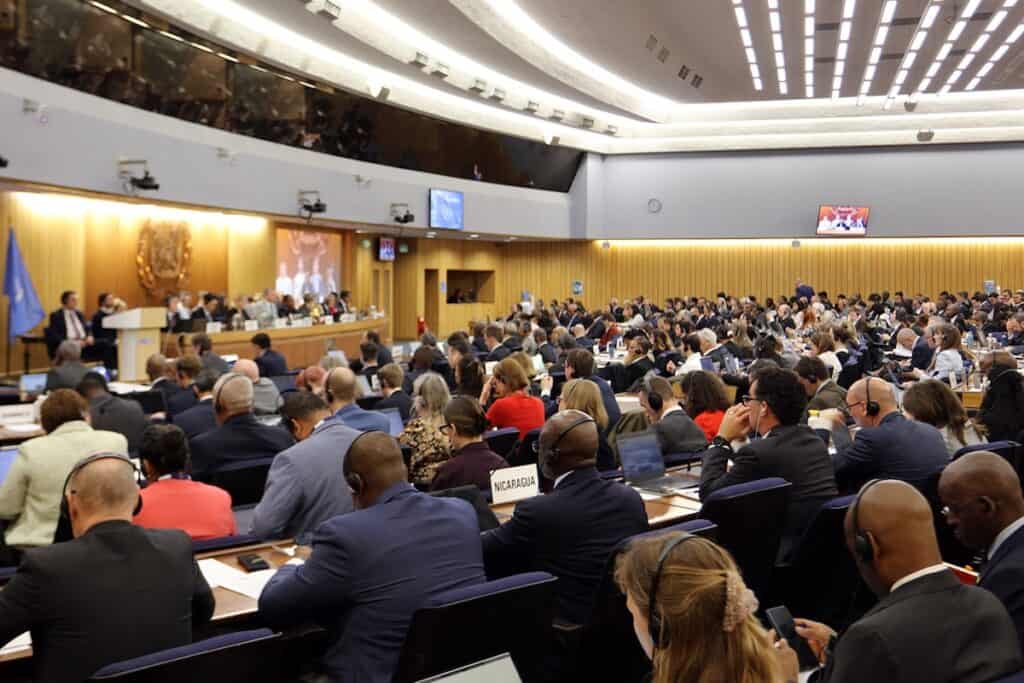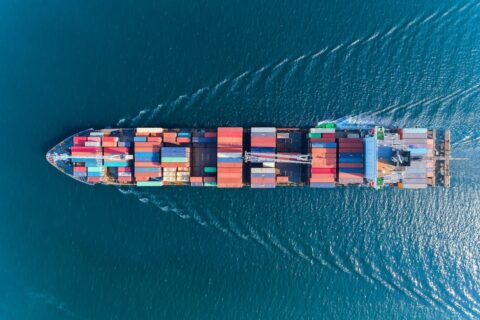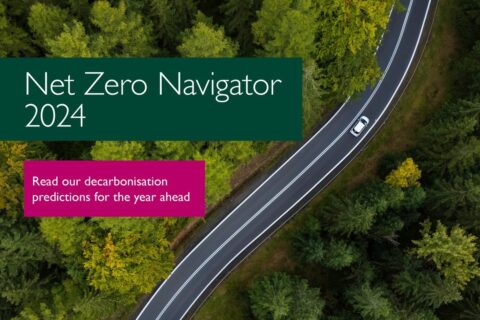
In a landmark move, the global authority responsible for prevention of marine and atmospheric pollution has agreed to regulate mandatory fuel standards and greenhouse gas (GHG) pricing for shipping worldwide.
As the United Nations specialised agency for the safety and security of shipping, plus prevention of marine and atmospheric pollution, the International Maritime Organization (IMO) took another step towards a legally binding framework to reduce GHG emissions from ships globally, aiming for net-zero around 2050.
Agreed over the course of a three-day meeting in London, the IMO Net-Zero Framework is the first in the world to combine mandatory emissions limits and GHG pricing across an entire industry sector.
The Framework represents a landmark achievement, says UK Transport Secretary, Heidi Alexander MP:
“This deal means ships will be incentivised to reduce GHG emissions, driving forward development of clean fuels. Measures agreed help the whole sector decarbonise and support developing countries, ensuring a just transition for all.”
Standards for large ocean-going ships
Approved by the Marine Environment Protection Committee during its 83rd session (MEPC 83) in April 2025, the Framework includes a new fuel standard for ships and a global pricing mechanism for emissions.
The measures will become mandatory for large ocean-going ships over 5,000 gross tonnage, which are responsible for 85% of the total CO2 emissions from international shipping.
In closing the meeting, IMO Secretary-General Arsenio Dominguez commended the spirit of cooperation:
“The approval of draft amendments to MARPOL Annex VI mandating the IMO Net-Zero Framework represents another significant step in our collective efforts to combat climate change and modernise shipping.”
Set to be formally adopted in October 2025, the measures will come into force officially in 2027,
Key elements of Net-Zero Framework
The IMO Net-Zero Framework will be included in a new Chapter 5 of Annex VI (Prevention of air pollution from ships) to the International Convention for the Prevention of Pollution from Ships (MARPOL).
MARPOL Annex VI currently has 108 Parties, covering 97% of the world’s merchant shipping fleet by tonnage, and already includes mandatory energy efficiency requirements for ships.
The goals are multiple: the aim is to achieve the climate targets set out in the 2023 IMO Strategy on the Reduction of GHG Emissions from Ships; to accelerate the introduction of zero- and near-zero-GHG fuels, technologies and energy sources; and to support a just and equitable transition.
Under the draft regulations, key compliance requirements for ships will include:
- Global fuel standard: Ships must reduce, over time, their annual greenhouse gas fuel intensity (GFI) – that is, how much GHG is emitted for each unit of energy used, calculated using a well-to-wake approach;
- Global economic measure: Ships emitting above GFI thresholds must acquire remedial units to balance deficit emissions; those using zero or near-zero GHG technologies will be eligible for financial rewards.
Compliance levels for GFI targets
There will be two levels of compliance for GFI targets: a Base Target; and a Direct Compliance Target, at which ships would be eligible to earn ‘surplus units’.
Ships that emit above the set thresholds can balance their emissions deficit by:
- Transferring surplus units from other ships;
- Using surplus units they have already banked;
- Using remedial units acquired through contributions to the IMO Net-Zero Fund.
IMO Net-Zero Fund disbursements
The IMO Zet-Zero Fund will be established to collect pricing contributions from emissions.
These revenues will then be disbursed to:
- Reward low-emission ships;
- Support innovation, research, infrastructure and just-transition initiatives in developing countries;
- Fund training, technology transfer and capacity building to support the IMO GHG Strategy; and
- Mitigate negative impacts on vulnerable states, such as Small Island Developing States (SIDs) and Least Developed Countries (LDCs).
Next steps and entry into force
Upon approval, draft amendments to MARPOL Annex VI will be formally circulated to IMO Member States:
- October 2025 (MEPC/ES.2): Adoption of the amendments during an extraordinary session of the Marine Environment Protection Committee;
- Spring 2026 (MEPC 84): Approval of detailed implementation guidelines;
- 2027: Expected entry into force, 16 months after adoption (in accordance with MARPOL articles).
As a specialised agency of the United Nations, the International Maritime Organization (IMO) is the global standard-setting authority for the safety, security and environmental performance of international shipping.
International shipping transports more than 80% of global trade to peoples and communities all over the world. The main role of IMO is therefore to create a regulatory framework for the shipping industry that is fair and effective, universally adopted and universally implemented.
As part of the United Nations family, IMO is actively working towards the 2030 Agenda for Sustainable Development and the associated Sustainable Developement Goals (SDGs) While the oceans goal SDG 14 is central to IMO, aspects of the Organization’s work can be linked to all individual SDGs.
Further Reading:
- More about the International Maritime Organization (IMO); and a list of IMO Member States:
- More about the 2023 IMO Strategy on the Reduction of GHG Emissions from Ships;
- More on the International Convention for the Prevention of Pollution from Ships (MARPOL);
- Also on SustMeme, Suction sails on cargo ship cut carbon and cost;
- Also on SustMeme, Energy-saving methanol supply for green shipping;
- Also on SustMeme, Green berthing area for Port of Hamburg moors ships off-grid;
- Also on SustMeme, Decarbonising logistics: ‘Supply Chain Resilience’ in ‘The Sunday Times’.
Check out the full archive of stories on the SustMeme Transport & Mobility Channel, now available to Sponsor.







